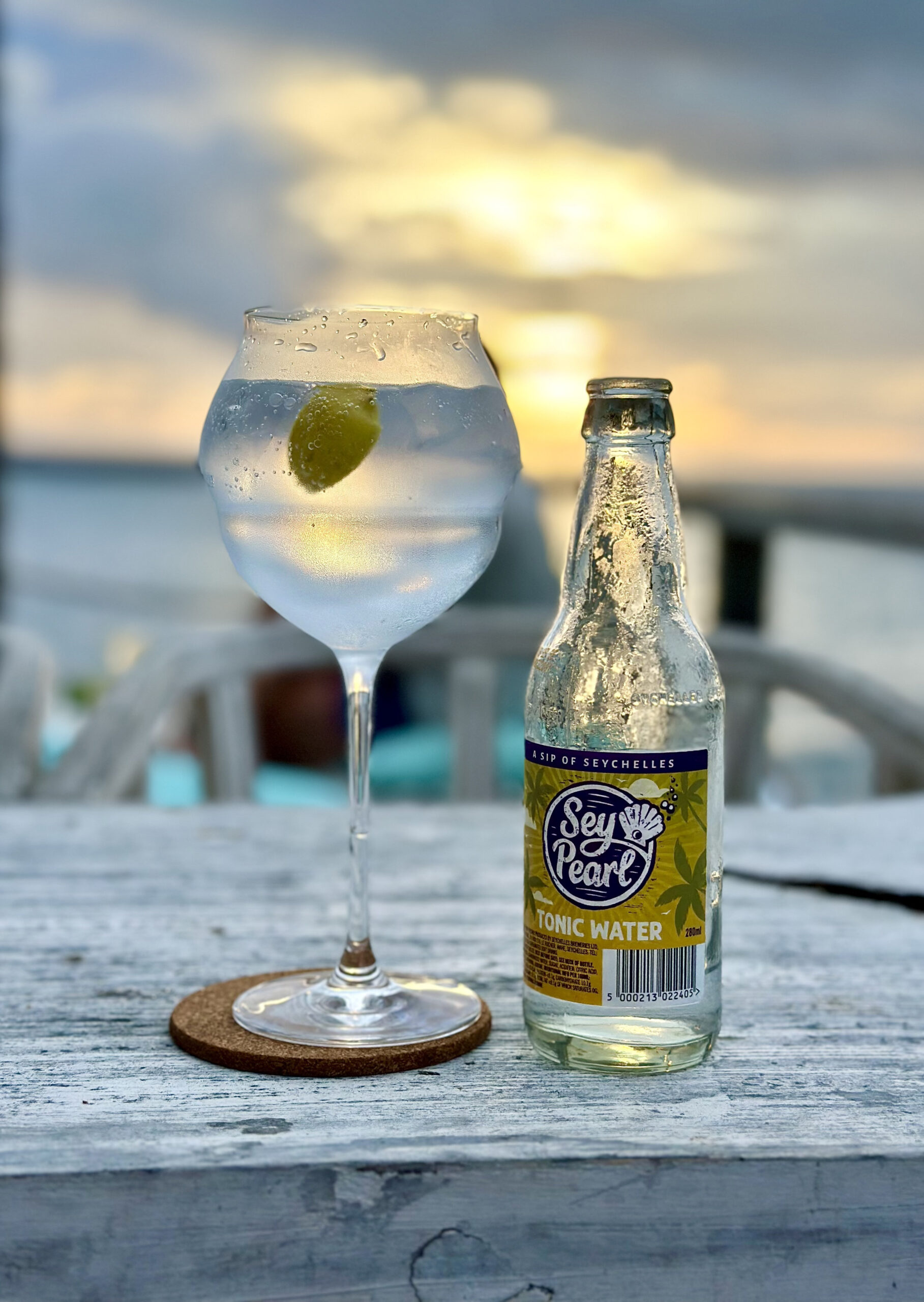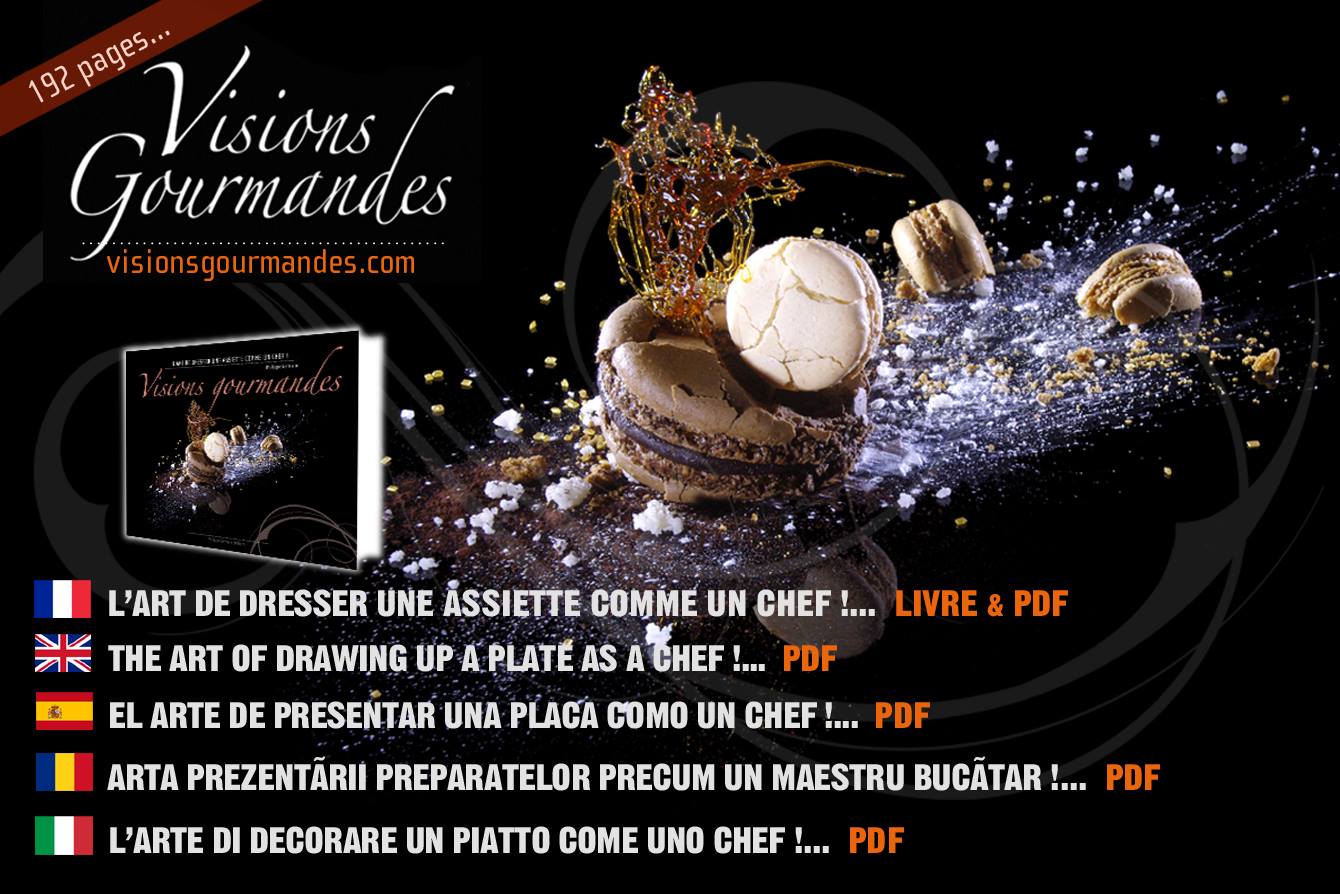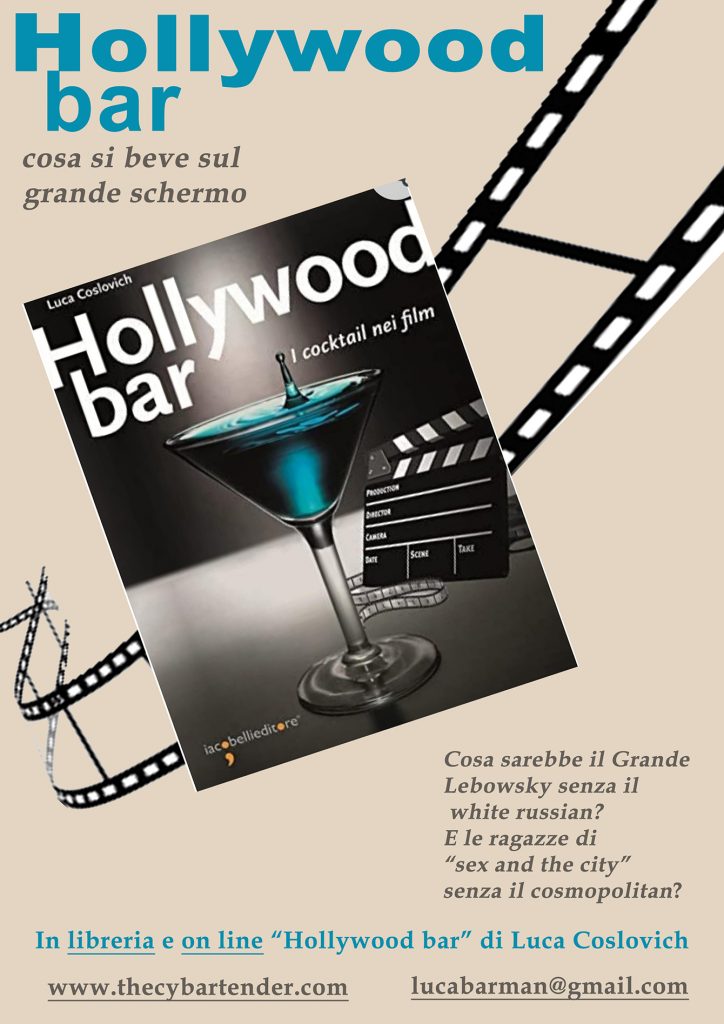
Article and Photos by Marco Alessandro Felicissimo Sommelier
The aperitivo is rooted in the Italian culture and can be considered a classic Italian tradition, the best way to end a working day, an occasion for unwinding after work and a convivial moment to be enjoyed with friends and new acquaintances. The aperitivo is typically held in the early evening, just before dinner, to ‘open up’ the stomach and stimulate theappetite.
It is a pre-dinner habit which is undoubtedly part of the Italian way of living. The word ‘aperitivo’ etymologically comes from the Latin word ‘aperire’, which means ‘to open’.
The aperitivo signals your stomach to begin the digestive process, prematurely releasing the fluids necessary to break down food, like getting a head start and be ready to dig into whatever comes next. Aperitifs are basically the flip side of digestifs, which are spirits or after-dinner cocktails meant to close an evening of food and drink.
It was during Roman times that the archetypal aperitivo first was created.
According to gastronomy historians, in fact, before starting their banquets rich Romans used to treat themselves to a gustatio, basically a snack anda glass of honey-sweetened wine.
The proper aperitivo was first introduced in Italy in the 14th century when distillation techniques were more refined. It was then used as a medicinal drink to aid digestion and stimulate the appetite, and soon became a popular pre-dinner ritual and part of the Italian lifestyle. It was in the late 18th century- early 19th century that the aperitivo evolved into a social experience like we know it today.
In fact, the modern concept of aperitivo emerged in the late 18th century, when vermouth became popular in the northern city of Turin (Torino) in Piemonte region.
It was there that distiller Antonio Benedetto Carpano created the vermouth (a widely popular aperitivo drink), in 1786, blending good quality Muscat with plants, spices and sugar and then fortified the wine using brandy. After Carpano, other producers began making their own versions of vermouth, such as Cinzano and Martini & Rossi, two brands that are still very popular today. Vermouth also became popular in France, where it was produced in the region of Chambery.
However, the history of Vermouth is quite ancient and dates back to four centuries BC when the Greek doctor and philosopher Hippocrates was prescribing his patients a drink made from dessert wine in which he macerated absinthe and oregano, to treat rheumatism, anaemia or painful periods.
This drink was supposed to contain a specific plant, ‘artemisia absinthium’ or absinthe, known in German as ‘wermut’, meaning ‘wormwood’, after which it is named. This plant contains thujone, a terpene similar to menthol and known for its therapeutic properties. It also gives its name to another well-known drink, absinthe, which, by the early 21st century, was produced by almost 200 brands in different countries.
But it was always in Turin that a strong cafe culture meant a growing number of people began sipping vermouth with something to eat in the afternoons and evenings ahead of dinner time. It was deemed improperto drink on an empty stomach, especially for female customers.
Even nowadays, in Italy we rarely have an alcoholic drink without a snack or finger food.
If you visit Turin you have to pop in for an aperitivo in some of its beautiful and historical cafes like Caffè Platti, Baratti&Milano, Caffè San Carlo, Caffè Elena, Roma già Talmone, in these cafes you will be transported in different eras.
After the appearance of vermouth in Turin, the aperitivo culture spread throughout Italy as more herbaceous, bitter, vermouth-based spirits began emerging.
In 1860, Gaspare Campari introduced his vibrant red, bitter beverage, named after his surname, widely served as an aperitivo with soda water or in cocktails like the Negroni and Americano.
The exact recipe forCampari is still a secret today.
In the same period, Alessandro Martini and Luigi Rossi blended herbs, natural caramel, aromatic botanicals, and herbaceous plants to create their first vermouth, Martini & Rossi Rosso (this recipe, too, is another guarded secret).
Then came pharmacist Ausano Ramazzotti, whose bitter sold incredibly fast at the bar he opened just near the La Scala Opera House in Milan. By the early beginning of the 20th century, the aperitivo had entered Italian culture becoming a real national amusement.
Nowadays, the practice of aperitivo usually involves a cocktail (alcoholic or non-alcoholic) or a glass of wine before dinner, precisely to stimulate the appetite. Besides being a moment of conviviality, aperitivo also has an important enogastronomic function. It is the perfect opportunity to savour different flavours accompanied by creative snacks and refreshing drinks, thus preparing the palate for the upcoming meal.
It is interesting to note how the aperitivo has gained international notorietyand managed to captivate an international audience. Its admiration is also a consequence of Italy’s fame for its gastronomic culture and culinary heritage, for which travelers have always been mesmerised by. Additionally, aperitivo offers a unique experience where you can savour local delicacies accompanied by quality beverages, all in a relaxed and convivial atmosphere. This combination of elements has contributed to the worldwide spread of aperitivo, making it a beloved and appreciated practice even beyond Italian borders and this trend doesn’t seem to weaken!
The aperitivo is also the perfect alternative to a formal dinner, you can invite friends for an informal and relaxing moment on weekends or weekdays. Usually it is organised as a standing aperitivo, around a good bottle of sparkling wine, mixed drinks, cold appetisers, and sometimes a dish prepared where everyone gathers.
Some of the iconic aperitive cocktails
The aperitivo shouldn’t be confused with ‘happy hour’, it is not about two-for-one deals but it is a state of mind and it is considered a magic pre-dinner moment.
The aperitivo is fun, unpretentious, and probably the best way to kick off an evening or, why not, a celebration in style (i.e.: before a wedding, etc.).
These listed below are some iconic and classic cocktails, while some others are more recent revelation but for sure all of them deserve to be tried.
Negroni
The Negroni cocktail is likely the mother of all aperitifs. This iconic Italian drink was invented in Florence in 1919 when Count Camillo Negroni requested to have his Americano cocktail strengthened, as it was made with sweet vermouth, Campari, and club soda, the bartender replaced the club soda with London Dry Gin. An important aperitif ingredient in this cocktail is Campari. This deep red, intensely bitter liqueur is made from an infusion of herbs and spices, which are still secret. Sweet vermouth is also considered an aperitif, so the two together, combined with gin in equal parts, result in a balanced, sharp, unique drink perfect to accompany some snacks. The Campari is quite bitter, but when mixed with the other two ingredients, its full character is subdued.
The Negroni cocktail inspired also a lot of its variations, including the next cocktail on this list.
Negroni Sbagliato
According to relevant Italian gastronomy magazines, the Negroni Sbagliato, or “wrong Negroni,” was invented by Mirko Stocchetto, a bartender working at Bar Basso in Milan in 1972. After a customer ordered a Negroni, Stocchetto added sparkling wine to the mix of sweet vermouth and Campari instead of gin and the customer loved it.
Because of the gin replacement with sparkling wine, the Negroni Sbagliato has a lower alcohol content and for this reason more suitable for getting the night going. It is a great option to pace yourself withoutsacrificing taste or the qualities of a great aperitif.


Aperol Spritz
The Aperol Spritz is one of the most popular and widely-known cocktails.It has been around for decades. The liqueur used in this cocktail dates back to 1919, when Italian brothers Luigi and Silvio Barbieri founded Aperol in Padua (Veneto region). At the beginning, this aperitivo wasn’t very successful, in fact it was only in the 1950s that the bubbly cocktail we all know and love today was created. It was thanks to television advertisement showing the Aperol Spritz recipe that triggered its popularity.
The simple three-ingredient combination of a classic Aperol Spritz recipe Aperol, sparkling wine, and soda water has made the Aperol Spritz the favourite cocktail for brunch and summer evenings.
In 2002, Campari purchased the Aperol brand, and the two now dominate the aperitivo scene together. Aperol is also a liqueur made from fruits, herbs, and spices, but its palatability compared to Campari is far milder. Aperol is still bitter but is more approachable and easy-drinking, this the reason why this cocktail gained a lot of popularity.
Hugo Spritz
The Hugo is another spritz cocktail that consists of sparkling wine, mint, and elderflower liqueur (St. Germain). St. Germain is used for many iconic drinks and has earned the nickname of “bartender’s ketchup” because of its versatility, widespread appeal, and ability to improve many cocktail recipes.
The first Hugo Spritz was prepared in 2005 by bartender Roland Gruber in the Italian town of Naturno, in South Tyrol (Alto Adige) region. This cocktail is very popular in summer months in South Tyrol as well as in Germany and Austria. The Hugo is another low alcohol cocktail and very easy to prepare, and its ingredients can be found in almost every liquor store. If you have never heard of St. Germain, surely your local wine and spirits store will have it in stock.
Bicicletta
The name of the cocktail Bicicletta (meaning “bicycle” in Italian),originated from the older customers who after some drinks in the local “osterie” were tipsy and would swerve riding their bicycles back home. If you like Aperol Spritz, the Bicicletta is the right cocktail for you. It is prepared by swapping the Aperol for Campari, the prosecco for dry white wine. The bubbliness found in this cocktail is only from the soda water, which does also well to lengthen the other two ingredients.
The most suitable still white wines for this cocktail are Pinot Grigio and Sauvignon Blanc which are sharper than other wines and they highlight the aromatic character of the Campari. Add an orange wedge or two as a garnish.
Vermouth Spritz
This spritz is one of the most basic, straightforward cocktails, because it consists of just vermouth and soda water. Drinking vermouth on its own is an acceptable aperitif but it may not be suitable for everyone’s taste because of its bold and spiced flavour profile. This is why in this cocktail soda water is added to lengthen the fortified wine.
For this cocktail, you can choose dry or sweet vermouth and add whatever as a garnish.
Pimm’s Cup
The Pimm’s Cup cocktail is one of the greatest drinks. It dates back to the mid-19th century when James Pimm founded the Pimm’s brand between 1823 and 1840 in his London oyster bar close to the Bank of England. The original Pimm’s No. 1 is a gin-based liqueur made with quinine and some herbs to help the digestive process. James Pimm created also Pimm’s numbers two to six, each one of them based on a different liqueur.
The original Pimm’s No. 1 is the basis of this traditional cocktail, which consist of a fruity, herbal liqueur, assorted fruits, ginger ale or lemonade, and fresh mint. The fruit and/or vegetables used in a Pimm’s Cup are usually combinations of slices or pieces of cucumber, strawberry, orange, or lemon, which can be enjoyed later as a snack. This cocktail is another low alcohol drink great for getting the evening started or sipping throughout a brunch. When making a Pimm’s Cup, some bartenders add an extra pouring of London Dry Gin to give it some extra strength.
The Pimm’s Cup has become the official cocktail of the Wimbledon tennis championships, where in fact the very first official Pimm’s bar opened in 1971. For sure it is a cocktail worth a try.
Intro to Aperol
This aperitif cocktail was created by one of the most famous bartenders in the world today, Audrey Saunders. Based in New York City, she is responsible for many modern cocktails as well as starting the iconic PeguClub. In the Intro to Aperol, Aperol is the main ingredient supported by gin, lemon juice, and aromatic bitters. This is a very refreshing cocktail whichis tart, dry, and a little bitter on the finish.
The orange twist garnish makes it a bit more palatable. If you like Aperol, but seem to have been stuck on the Aperol Spritz, this cocktail is the right one which will take you towards many other cocktails made with Aperol, like the next one below.
Paper Plane
The Paper Plane is one of the most important modern classic cocktails. It was invented in 2007 by icon Australian bartender Sam Ross for the opening menu of The Violet Hour in Chicago, a bar where he never worked. The Paper Plane originally contained equal parts bourbon, Campari, Amaro Nonino, and lemon juice. Sometime later, Ross tried the drink again and found it to be unbalanced. He decided to swap the Campari for Aperol to reduce the tartness and complement the herbal amaro, this latter recipe is the one that now can be found in the menus all over the world. Amaro Nonino is an Italian amaro, which is a herbal, syrupy, liqueur typically drunk as a digestif.
Amaro Nonino is from Friuli, Italy, and was invented in 1933.
This herbaceous liqueur is the perfect ingredient for the Paper Plane, as its bitter qualities are counterbalanced by the Aperol and lemon juice, which are rounded by the sweetness of the bourbon.
The Paper Plane cocktail is credited with spreading the popularity of Amaro Nonino.
Dirty Martini
The classic dry martini, consisting of dry vermouth and gin, was created in the early 1900s and was an instant success. A New York bartender decided to experiment by muddling in some olives, as a garnish to the drink, and this is how the Dirty Martini got its name. Later one, the mixing of straight olive juice became the standard. This is a cocktail that is either loved or hated but it has managed to stay on the drink lists of the most famous bars all over the world. It was even the favourite cocktail of U.S. President Franklin D. Roosevelt.










